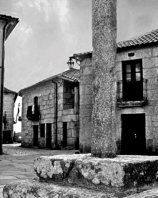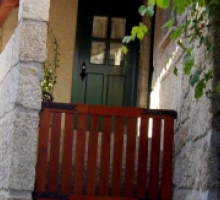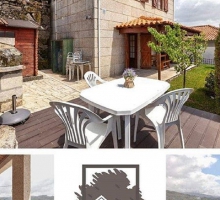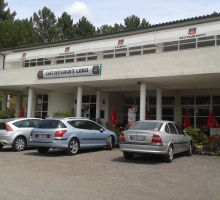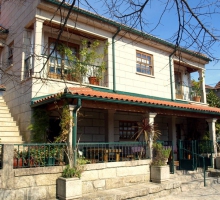The “Soajo” autonomy traditions date back to citizenship validation… nonetheless it’s with the privileges granted by “D. Dinis” and later “D. João” I, that the “Soajo” affirmed their local council rights. The privileges concerns were related to daily life, through taxes and freedom linked advantages, but mainly authorities would not accept nobility to stay overnight. This exclusion of the nobles was of great importance because it is known the abuses and excesses that the “inn of law” allowed the gentlemen on the populations.
Already in the 19th century, by a decree of “D. Manuel”, dating back to 1514, the dignity of the Council Headquarters was officially recognized and lasted until the liberal administrative reorganization, which integrated the “Soajo” into the “Arcos” Municipality. It still remains till today a thorn nailed deep into “Soajo”’s inhabitants individual memories ... One of the remnant consequence of the municipality autonomy is still erected in plain Central Square. We’re dealing here with a pillory, consisting of a simple cylindrical column, topped by a granite grimacing sculpted figure itself topped by a triangular slab.
This peculiar pillory; as a matter of fact, they pretty much all got the same characteristics in common, was intended to the public punishment of those who attempted to break the municipality’s laws. Such punishments could include public displays or physical punishments. The condemned was tied to the pillory to serve his sentence, exposed to all passer-by witnessing the “public show”. Even when these punishments disappeared, the pillory remained the council’s symbolism of power and freemen’s autonomy.
Another “Soajo” EX-LIBRIS, is its impressive set of “Espigueiro” (Cereals warehouses). It's worthwhile strolling through these constructions and admire each off them details... An “Espigueiro” (cereal warehouses) is basically a Cereal warehouse, designed to save corncob and prevent it from being spoiled by plagues such as rodents or weather related inconveniences. Therefore they’re based on top of pillars supporting round millstones: no rodent can climb such an obstacle!
Up there, the balusters, separated by spaces for ventilation purposes, form the “Espigueiro”, where it collects the cereals. The toppings are usually granite slabs, topped by “protective” crosses (crucifixes). The doors are usually made of wood, sometimes carefully decorated with popular motifs.
Location: Arcos de Valdevez
Already in the 19th century, by a decree of “D. Manuel”, dating back to 1514, the dignity of the Council Headquarters was officially recognized and lasted until the liberal administrative reorganization, which integrated the “Soajo” into the “Arcos” Municipality. It still remains till today a thorn nailed deep into “Soajo”’s inhabitants individual memories ... One of the remnant consequence of the municipality autonomy is still erected in plain Central Square. We’re dealing here with a pillory, consisting of a simple cylindrical column, topped by a granite grimacing sculpted figure itself topped by a triangular slab.
This peculiar pillory; as a matter of fact, they pretty much all got the same characteristics in common, was intended to the public punishment of those who attempted to break the municipality’s laws. Such punishments could include public displays or physical punishments. The condemned was tied to the pillory to serve his sentence, exposed to all passer-by witnessing the “public show”. Even when these punishments disappeared, the pillory remained the council’s symbolism of power and freemen’s autonomy.
Another “Soajo” EX-LIBRIS, is its impressive set of “Espigueiro” (Cereals warehouses). It's worthwhile strolling through these constructions and admire each off them details... An “Espigueiro” (cereal warehouses) is basically a Cereal warehouse, designed to save corncob and prevent it from being spoiled by plagues such as rodents or weather related inconveniences. Therefore they’re based on top of pillars supporting round millstones: no rodent can climb such an obstacle!
Up there, the balusters, separated by spaces for ventilation purposes, form the “Espigueiro”, where it collects the cereals. The toppings are usually granite slabs, topped by “protective” crosses (crucifixes). The doors are usually made of wood, sometimes carefully decorated with popular motifs.
Location: Arcos de Valdevez
